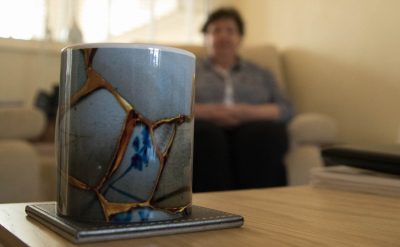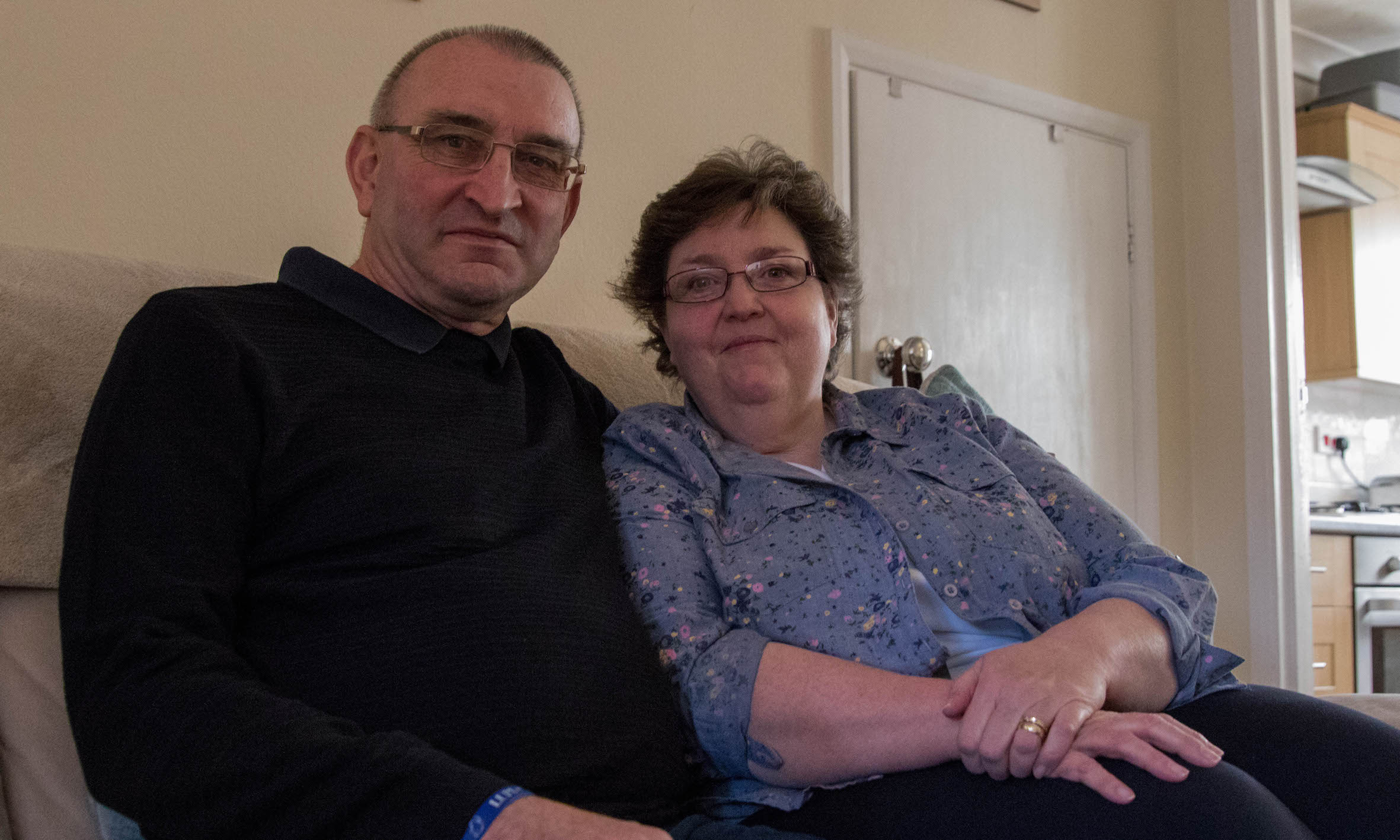Helen started experiencing symptoms of lupus when she was just eleven, but she didn’t know what it was until much later.
“I was at school and I developed a rash on my face […] and we didn’t know what it was so we went to the doctor and they said it looked like a burn.
“My parents asked ‘Have you touched acid in school?’ That was the first thing.”
It wasn’t until six years later, at the age of 17, that she finally got an answer.
It’s now been more than 30 years since she was diagnosed with lupus.
After the rash appeared, she started to experience a whole array of symptoms that nobody could explain or believe.
“My mum and dad thought I was lazy.”
“So then, I had recurrent kidney infections.
“I was tired, my body ached, I was backwards and forwards to the doctor.
“My mum and dad thought I was lazy.”
Helen tells me this while we sit with her husband in their living room on a sunny day. The blinds are mostly drawn so that she won’t come out in a rash. A damp halogen lamp is keeping the room bright.
Like many others with lupus, Helen has photosensitive skin. Sunlight can cause skin irritation, if she spends too long in it.
Getting diagnosed
Systemic lupus erythematosus is an incurable, auto-immune condition where the immune system starts to attack different parts of the body.
It effects 1 in 1000 people in the UK, around ninety percent of whom are women.
What’s more, it’s causes aren’t completely understood.
The condition is hard to spot because many of the symptoms could be attributed to other conditions.
Professor Ian Bruce is a Consultant Rheumatologist in Manchester who specialises in treating lupus.
He said: “Many of the signs and symptoms of lupus, when they occur in isolation, are common in the general population.
“Lupus however typically affects several parts of the body so it is the accumulation of suggestive signs and symptoms […] that should prompt consideration of a multi-system condition such as lupus.”
A recent survey by LUPUS UK has shown that Helen is not the only person who’s had to wait so long.
The speed of diagnosis hasn’t improved over the past decades, leaving many in confusion about their symptoms while they wait for a diagnosis.
LUPUS UK published in a summary of the survey that:
- It is taking, on average, 6.4 years to diagnose lupus from the first symptom(s) experienced.
- Almost a half (46.9%) of individuals are initially misdiagnosed.
- Fatigue and joint pain/swelling were reported as the most difficult symptoms to live with.
“I went to school still with my gums bleeding”
Among the symptoms that Helen initially experienced in this interim period were things like fatigue, glandular fever and a low platelet count, which causes continuous bleeding.
“I went to school still with my gums bleeding,” she says, describing her ordeal after brushing her teeth one day.
Even with advances in medicine, lupus is still difficult to detect and many are left without answers, experiencing a plethora of difficult to understand symptoms.
In the period between first symptoms and diagnosis, people experience issues with their physical, emotional and financial wellbeing, only to find out when diagnosis comes that their condition is lifelong.
LUPUS UK says that more awareness must be raised of the condition so that signs and symptoms can be recognised early on, and improve the quality of life for those living with lupus.
Coping with lupus
Helen says it’s hard for people when they reach a diagnosis because they think the medication will take them back six years, but this isn’t the case.
She said: “I would say[…] 50% just expect the medication to take them straight back to how they were before they were diagnosed and it’s not like that because the medication works to a point but then you get side effects from that.”
But, Helen decided that she wouldn’t let the diagnosis bring her down.
She said: “I thought, ‘I’m going to have to make a friend of this illness, otherwise it’s going to be a constant battle”
She added that the most important thing she’s learned is to know her illness; knowing when to take a break.
She says she listens to it when it’s talking to her, otherwise it would rule her life. That’s how she’s coped over the years.
But Helen also recognises that she’s not done it alone, noting that her husband and two sons have been invaluable.
Last year, she had a fall that caused massive swelling in her leg and really dampened her spirits.
She said her family sent her a positive message every day.
Her youngest son bought Helen a kintsugi mug.
Kintsugi is a Japanese technique of repairing ceramics.
She says that it reminds her that broken objects should be repaired, because sometimes, in doing so, they become more valuable.
She said: “Our son […] wanted to show me that although I had broken my shoulder two years ago and then had another serious fall last year, I wasn’t broken but to be positive as these experiences, although hard can make me stronger.”








